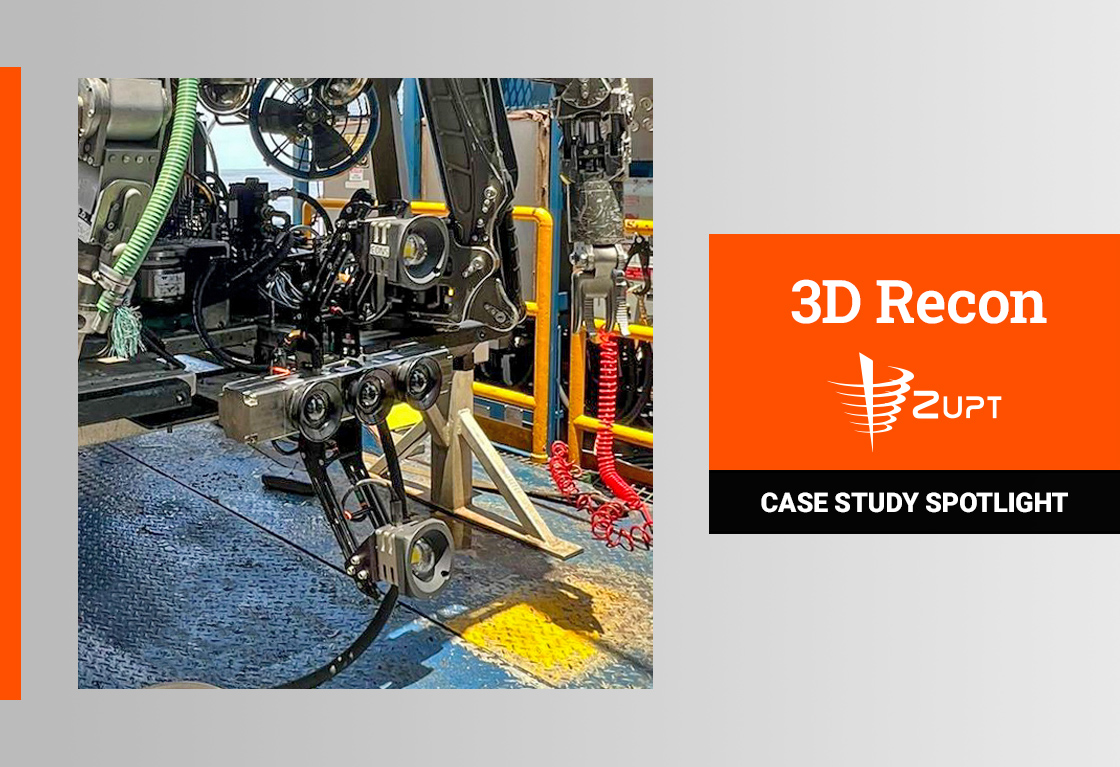Get in touch with us for any questions or quotes on surveying services and products. We will respond back as soon as we can.
Case Study Spotlight: Fast Digital Inspection Enabled by 3D Recon
Supporting a Super Major Client's Vision for Contactless Subsea Integrity Management
Introduction
Fast Digital Inspection (FDI) is modernizing the way the offshore industry approaches subsea integrity management. By combining georeferenced 3D modeling with high-resolution imaging and advanced cathodic protection assessment, FDI offers a faster, safer, and more sustainable alternative to traditional inspection methods.
Zupt, LLC helped bring this concept to life by integrating its 3D Recon technology with Ocean Floor Geophysics' iCP system. Working alongside a Super Major Client, Zupt enabled a fully integrated inspection solution that delivered unmatched visibility into subsea infrastructure, both in the field and in final deliverables.
Background
FDI centers around detailed planning, the use of multiple integrated technologies, and the delivery of accurate, georeferenced outputs. Zupt's experience in subsea positioning and 3D modeling, combined with Ocean Floor Geophysics' iCP system, provided the core technology required to deliver on this vision.
Field Deployment
Scope of Work
- 400+ subsea structures were inspected
- 200+ structures were fully processed while offshore
Efficiency Gains
- The campaign achieved a 40% reduction in vessel days compared to traditional inspection methods
Technology Integration
- Zupt's 3D Recon generated real-time, high-resolution, georeferenced 3D models
- OFG's iCP system delivered detailed cathodic protection (CP) heat maps
- Traditional photo and video deliverables were included for full compatibility with legacy workflows
Primary Benefits
- Zupt's 3D Recon and Ocean Floor Geophysics' iCP systems were combined into a single equipment spread, creating a unified platform capable of capturing both the physical and electromagnetic condition of subsea structures.
2. Real-Time, High-Quality Deliverables
- Colorized, georeferenced 3D models
- CP heat maps
- Conventional inspection video and photography
- Data was processed onboard, enabling rapid decision-making and minimizing delays
3. Operational Efficiency
- Pre-mobilization planning and system integration streamlined offshore operations
- Real-time QC reduced inspection times and avoided redundant data collection
- Standardized workflows improved consistency across acquisition and processing
4. Reduced Environmental Impact
- Fewer vessel days and less offshore manpower translated to a reduced environmental impact and significantly lower carbon footprint
Challenges and Next Steps
- Cross-Stakeholder Collaboration: Broader adoption requires alignment across global operator teams, engineering contractors, and inspection service providers.
- Standardization of Data: Deliverables must align with established integrity management systems and standards.
- Continuous Innovation: To maintain a competitive edge, ongoing technology improvements and workflow enhancements are essential.
Zupt is actively addressing these needs through the continued development of its 3D Recon platform, process optimization, and collaborative work with major operators and service partners.
Conclusion
The Super Major Client's implementation of Fast Digital Inspection demonstrates the value of innovation in subsea integrity management. With Zupt's 3D Recon technology at its core, FDI has proven to be a viable and effective alternative to traditional inspection campaigns, providing faster results, higher-quality data, and a smaller environmental footprint.
FDI, enabled by Zupt, is redefining what's possible in subsea inspection.

